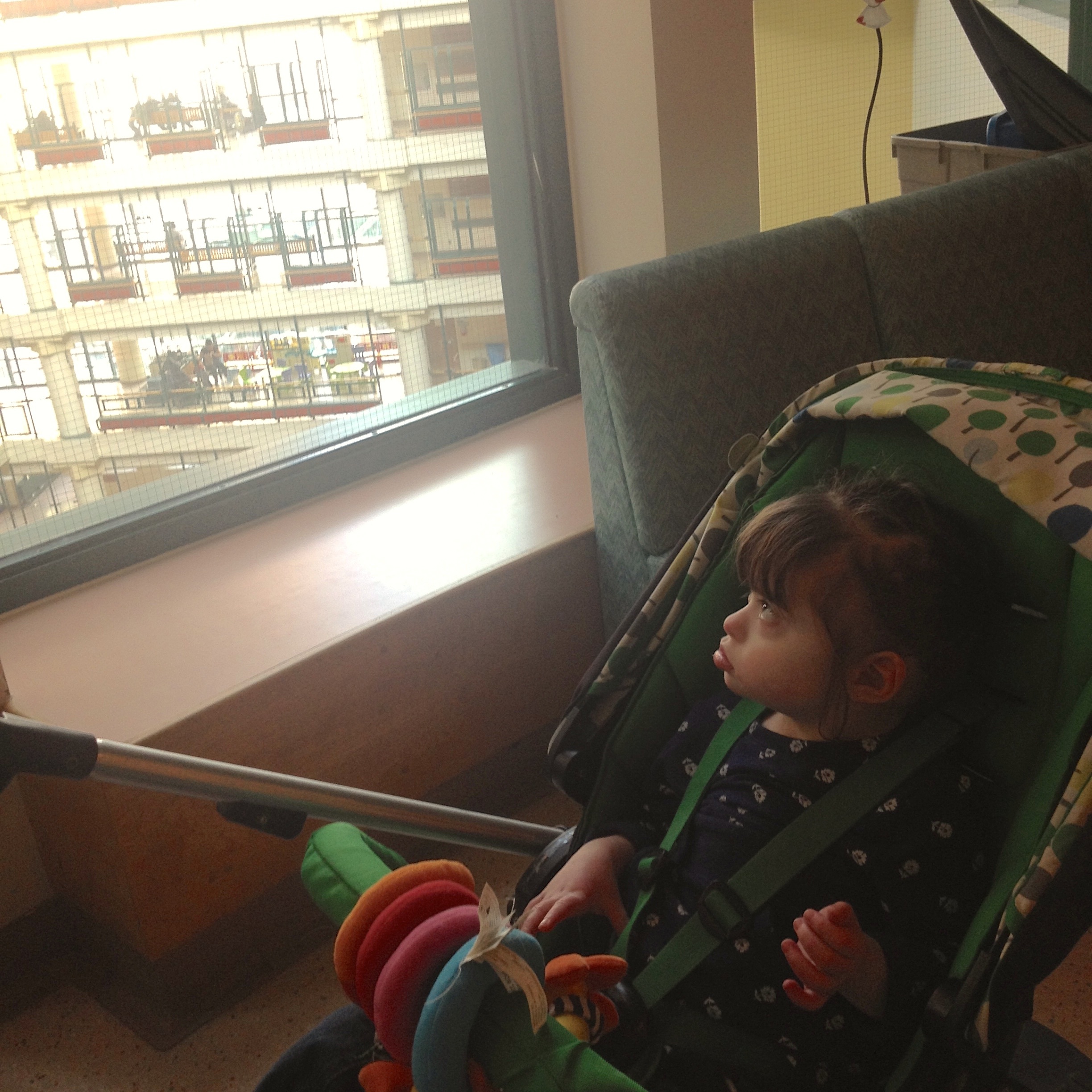If, fifteen years ago, you had told me that I would be able to sit in a room, reading medical records and understand the following sentence, “loss of grey-white differentiation consistent with Hypoxic Ischemic Encephalopthy; insult occurring in the bilateral parietal, temporal, occipital lobes and occurring the the posterior frontal lobe along the vertex”, I would have laughed you out of that room. I skipped any part of grade 10 science that involved dissecting anything and followed that by never taking another science class again because words like, “ischemic”, and “encephalopthy”, actually caused me stress.
But, here I am, fifteen years later, and that’s exactly how I spent my morning.
After Lily’s yearly visit with the thrombosis team at Sick Kids in November, we realized that there were some gaps in our knowledge of Lily’s medical history – nothing really significant, but things that you couldn’t know unless you had been beside her listening to daily rounds. And, as those of you who really know me may be able to appreciate, I don’t like the feeling of not completely understanding what’s happening to someone I love. That’s my role in our family – when someone gets sick, I start to research and I don’t stop until I have a very firm grasp on the entire scenario. So, shortly afterwards, I made an appointment with the Health Records department at Sick Kids to come in and view Lily’s medical records and that’s where I spent my time this morning. They were kind enough to set me up at a little round table and slapped 4 massive folders in front of me. After a quick lesson on how the charts are arranged, they left me in peace to read to my hearts content. I’m very happy to report that there were no major surprises: a small allergy that we didn’t know about, a little more family information from the social work department, and the knowledge that Lily’s PVS was diagnosed before she came into our care (we had always thought that it was simply suspected and the surgery she had shortly after she was placed with us confirmed it) and she had actually already lost function of her lower left pulmonary vein before she was 4 months old.
What was amazing to me, although it shouldn’t be surprising, is how surreal it felt to be staring at one or two sentences that actually fill our entire lives. It’s amazing how words can do that, how sometimes they actually just say the bare minimum and not say anything at all. If you were just someone reading the sentence, “loss of grey-white differentiation consistent with HIE; insult occurring in the bilateral parietal, temporal, occipital lobes and occurring in the posterior frontal lobe along the vertex,” you would just read the words. Maybe you would understand that it means a brain injury that occurs when the brain is deprived of an adequate of oxygen and that the injury is shown mainly on both sides of 3 different lobes and at the back of a fourth. But, you don’t really KNOW what it means; you don’t know that it means that Lily will be blind, totally and completely blind for 3 months and then suddenly one day start seeing again. You don’t know that it means that Lily will not move the left side of her body for what feels like forever, and will struggle to sit up and to hold a toy until one day she sits up and then she bum scoots across the floor and then starts pulling things off of the coffee table and bounces in excitement when you hold up Hug Me Elmo because she’s so excited to play with him. You don’t know that it means that Lily is delayed in her speech and sometimes you’re so afraid that you’re never going to get to experience that moment where she turns, looks up at you and calls you Mamma until one day she starts pulling on the cats tail and looks another child in the face and you’re a little less afraid. Two sentences that seem like nothing more than words on a page, but that make up every single day of our lives.
But then you get to think about it a different way. There were a lot of other words in those charts – a lot of words that basically said that a lot of people were uncertain about Lily’s future and suddenly you’re thinking about Lily and realizing that she is proving these 4 charts of words wrong. Those words mean nothing when it comes to determining who Lily is and who she will become. She has surpassed the expectations of so many people and this is just the beginning. I left the medical records department and met my lovely wife and my incredible daughter and we all went upstairs and had our visit with Lily’s neurologist. And instead of thinking about those two sentences, I kept thinking about the other words that have become a Lily mantra of sorts, the ones that, to me, sum up Lily far more accurately than anything written in those 4 charts…
“and though she be but little, she is fierce.”
